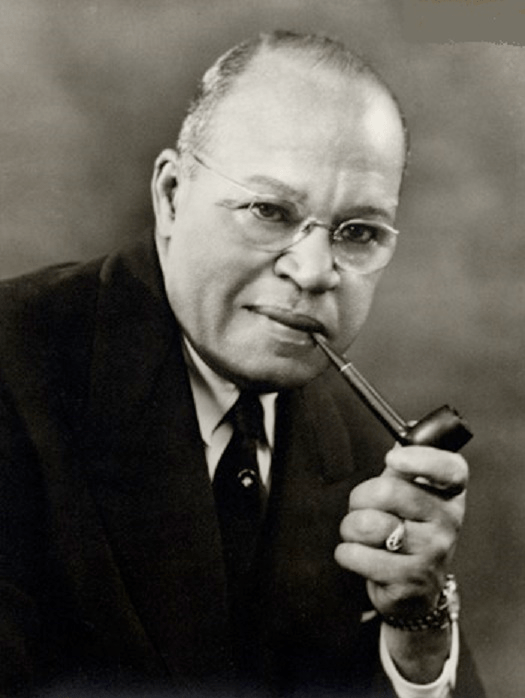Archibald Alphonso Alexander: The ORIGINAL Builder of Sites that are up for Renovation in DC

Did you know that a Black man built the Whitehurst Freeway, an extension to the Baltimore-Washington Parkway, the wall around the Tidal Basin, the Moton airfield that the Famous Tuskegee Airmen trained? In addition, Alexander’s firm worked on engineering projects in nearly every state in the Union, plus several places in the Caribbean, and Central and South America, which included noteworthy bridges, freeways, tunnels, railroad trestles, airfields, power plants, apartments, and other buildings.
Archibald Alphonso Alexander (May 14, 1888 – January 4, 1958) was an American architect and engineer. He was an early African-American graduate of the University of Iowa and the first African American to graduate from the University of Iowa’s College of Engineering. In addition to his engineering feats, Alexander was also a governor, appointed by Eisenhower, to the U.S. Virgin Islands. His engineering career spanned 46 years.
Alexander was born in Ottumwa, Iowa, graduated from Oak Park High School in 1905 and attended Highland Park College and Cummins Art College before going to State University of Iowa (later known as the University of Iowa) to study engineering. Alexander was the only black student at the University at the time and was the first African American student to graduate from the University of Iowa’s engineering program in 1912. He was also the first African American football player at the University of Iowa, where he was a three-year starting tackle and earned the nickname “Alexander the Great”. After college, Alexander worked as a draftsman for Marsh Engineering Company, a Des Moines company that designed many significant bridges that are still around today. He later obtained a civil engineering degree from Iowa State University in 1925.
Alexander eventually left Marsh and formed his own engineering company at the age of 26. Alexander’s firm, A. A. Alexander, Inc., which initially specialized in bridges. His significant projects during that time included building the University of Iowa’s heating and cooling system.
In 1929, Alexander partnered with his white former classmate and football teammate Maurice A. Repass as a junior partner and changed the firm’s name to Alexander & Repass. Their first major project was a multimillion-dollar sewage treatment plant in Grand Rapids, Michigan.
In 1941-43, Alexander’s firm built a bridge and the seawall at the Tidal Basin in Washington DC. He brought in an integrated construction crew to do these projects. In 1947, his firm began construction of the Whitehurst Freeway (which runs along the Potomac River from the Key Bridge to K Street in downtown Washington, bypassing M Street, the main street in Georgetown) and an extension to the Baltimore–Washington Parkway.
The cost of the $3.294 million freeway was split between the D.C. and federal governments.
Interesting side note: Construction of the freeway required the demolition of the home of Francis Scott Key (who wrote the alleged National Anthem) at 3516 M Street NW. Efforts to have the home dismantled rather than demolished were popular, however, President Harry S. Truman declined to expend federal funds to have the home rebuilt elsewhere, and the structure went into storage. The Whitehurst Freeway opened on October 8, 1949.
Additionally, Alexander’s firm constructed the Moton Airfield, where the Tuskegee Airmen trained, as well as an apartment building for the National Association for Colored Women in DC. Alexander’s firm became so successful, Ebony magazine declared it “the nation’s most famous interracial business” in 1949. Ultimately, Alexander spearheaded over 300 projects throughout his career.

In 1954, Alexander was appointed Governor of the United States Virgin Islands by President Dwight D. Eisenhower. He was the first Republican governor there since the establishment of the civil government. His tenure at the post was short and controversial. In 1955, he was highly criticized for favoring old business partners in contracts for road building on St. Thomas. The United States House of Representatives launched a probe and he subsequently resigned on August 18, 1955, presumedly for health reasons. Alexander died of a heart attack in 1958.
Upon the death of his wife Audra Linzy Alexander in 1973, the University of Iowa, Tuskegee Institute, and Howard University received funds for engineering scholarships as stipulated in Alexander’s will. Each university received a trust with over 100,000 dollars (approximately $1.5 million in 2009 dollars altogether) for endowed engineering scholarships.
The Archie Alphonso Alexander Papers are held at the University of Iowa Special Collections & University Archives.
Sources:
https://ascelibrary.org/doi/10.1061/%28ASCE%29LM.1943-5630.0000029

